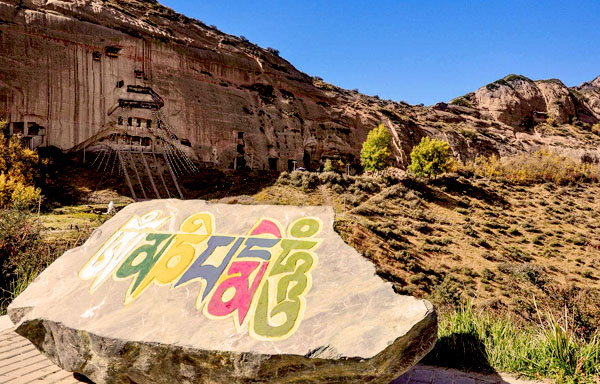- By admin
- In SilkRoadKnowledge
- 2016-06-07
The steppe nomads and the silk road
From long before Han times, China’s contacts with the outside world had involved a combination of trade and military conflict. Chinese products like silk and lacquerware were superior to those of its neighbors, creating a demand for Chinese goods. Some neighbors had goods they could offer in exchange, such as timber, horses, sheep and cattle. But raiding was a common alternative to trade and defending against the raids of non-Chinese peoples had been a problem since Shang times.
steppe nomads
The inner Asian steppe is a vast region of grasslands, mountains, and deserts, capable of supporting only a sparse population. In the best grasslands, such as those of modern Mongolia, rainfall is too light for grain to grow but animals can be pastured. Nomads of the steppe near China raised sheep, goats, camels, and horses, moving their camps north in summer and south in winter. Their skill as horseman and hunters, especially their ability to shoot arrows while riding horseback, made them a potent military striking force. The typical social structure of the steppe nomads was tribal, with family and clan units held together through loyalty to chiefs selected for their military prowess.
Different lifestyles
The differences in the mode of living of farmers and herders led to sharp contrasts in their social values. For most of the imperial period, Chinese farmers looked on horse-riding pastoralists as a scourge, as pitiless gangs of bullies who preferred robbing to working for their living.
The nomads, for their part, gloried in their military might and looked with scorn on farmers as weaklings incapable of defending themselves.
Conciliatory policies
The first great confederation of nomadic tribes in Inner Asia was formed by the Xiongnu in the late third century BC. The early Han emperors tried conciliatory policies, wooing the Xiongnu leaders with generous gifts, including silk, rice, cash, and even imperial princesses as brides. These policies ended in strengthening the enemy: in 166 BC 140,000 horseman raided deep into China, reaching a point less than 100 miles from the capital.
The offensive
Wudi took the offensive, sending 300,000 troops far into Xiongnu territory in 133 BC. These campaigns were enormously expensive, requiring long supply lines and entailing great losses of men and horses. The gain was territory. In 55 BC the Xiongnu confederation broke up into five contending groups. Not long afterwards the chief of the southern Xiongnu acceded to tributary status like that of the tribes and states along China’s western and southern borders. Vassal states had to send a prince as a hostage to the Chinese capital where he would be given a Chinese education. Vassals also had to send periodic missions with tributary gifts, a practice that appealed to them because it allowed opportunities for trade.
The tribute system and the silk road
To the Chinese the tribute system was costly but it avoided war and confirmed that China was the centre of the civilized world. Over the course of the dynasty the Han government gave enormous quantities of silk to the states and tribes that accepted tributary status.
Chinese silk was already popular in Rome by the time of Julius Caesar died in 44 BC, and was imported in even larger quantities in subsequent decades. Caravans returning to China brought gold, horses, and occasionally luxury goods of west Asian origin such as glass bead and cups.
When the power of the Han government waned under Wang Mang and the civil war that accompanied his fall, many of the distant territories broke away from China, but during the Later Han period. Chinese authority was reasserted.
Why Choose Us?
We are the top Silk Road tour operator based in Dunhuang, China. We focus on providing well designed Silk Road China Tours with resonable price and thoughtful service.
- Easy & carefree booking
- The best value
- Great travel experience
- Locally operated
Hot Tours
-

6 days Gansu tour to Binglingsi, Xiahe and Langmusi
Tour type : Private tour Price : from *** Destinations : Lanzhou - linxia - Xiahe - Langmusi - Hezuo - Lanzhou -

12 Days Gansu Highlights Tour
Tour type : Private tour Price : from *** Destinations : Xian – Tianshui – Lanzhou – Xiahe – Langmusi – Hezuo – Zhangye – Jiayuguan - Dunhuang -

10 Days Silk Road Classic Tour
Tour type : Private tour Price : from *** Destinations : Xian - Zhangye - Jiayuguan - Dunhuang - Turpan - Urumqi -

5 Days Zhangye - Alxa youqi Highlights Tour
Tour type : Private Tour Price : from *** Destinations : Zhangye - Alax youqi - Zhangye

